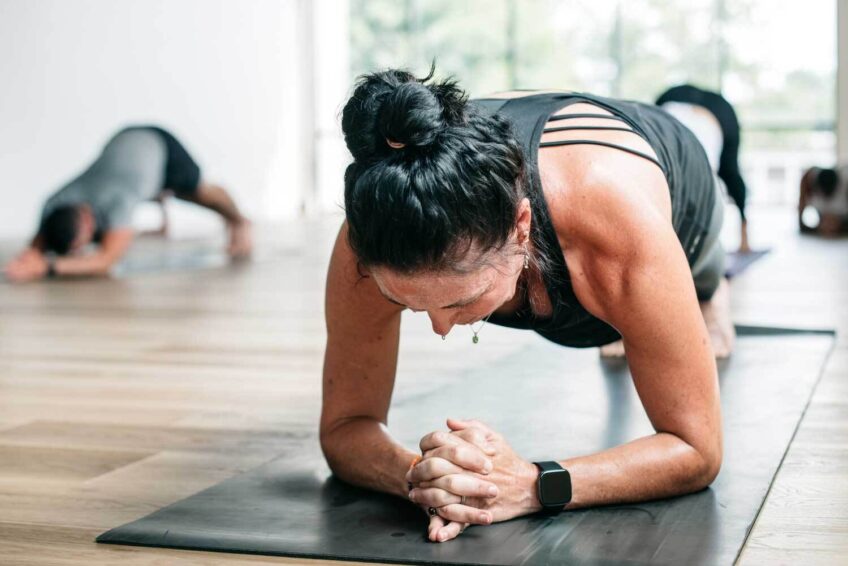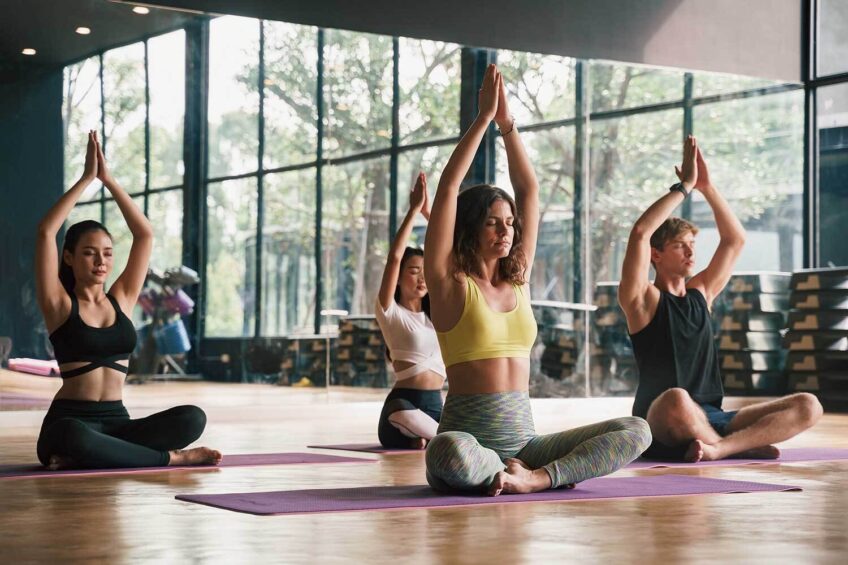When Are You Ready for Hot Yoga?
There are many things to consider if you're ready for hot yoga. This checklist will help in letting you know how close you are!

For those of us who still have some way to go on our personal yoga journeys (which is basically everyone), one of the questions that go through our minds at least once or twice a month is, “Am I ready for hot yoga?”
Hot yoga takes the challenge of regular yoga to the next level by introducing additional environmental stress. Still, in some ways, those stressors can actually add to and enhance the depth of your practice.
I’ve had the pleasure of talking with many different yogis, and while there are a few different opinions on the matter, I’m here to tell you that you’re never ready. Nothing, and I mean nothing, can prepare you for the challenge of hot yoga.
That’s a joke — sort of.
You might think you’re ready, but hot yoga’s high temperatures and humidity mean it isn’t for everyone. On the flip side, though, it is a great way to improve your practice. So, if you’re looking for a new challenge, hot yoga might be it.
There are three studies worth mentioning that look at the health impacts of Bikram classes. In the first, there was a marked increase in flexibility, leg strength, and balance in participants who attended three classes a week for eight weeks. In the second, there were findings that hot yoga has cardio and insulin resistance benefits. Finally, in the last study, 48% of participants showed improved mood, flexibility, less anxiety, and improved skin clarity. And it appears that weight loss is an extra side benefit.
If you take those results and add in some of the documented benefits of regular sauna use (which include lower blood pressure, reduced risk of heart disease, and fewer symptoms of depression), hot yoga starts to look like a great option.
If these benefits have convinced you, but you’re not sure if you’re ready, here’s a handy checklist I’ve developed by gathering the thoughts and opinions of top hot yoga instructors worldwide.
Make sure to look at my beginner yoga article, as well, before diving fully into hot yoga.
Are You Ready for Hot Yoga – The Ultimate Checklist
1) Are you aware of your physical limitations?
One of the biggest risks associated with hot yoga is overstretching. In a heated environment, your muscles become more limber, making you more flexible as you move through the postures. Overextending your body increases your risk of pulling or straining a muscle and can even impact your tendons and ligaments. Before taking a hot yoga class, you should know how far your body can stretch and work within those parameters to prevent injury.
2) Do you have any health concerns?
Hot yoga classes can vary from 85 to 113 degrees, which might not be ideal if you have diabetes or a heart condition. The heat and exertion of a hot yoga class put a lot of extra stress on your cardiovascular system as your heart rate will usually be higher, and you’re losing fluid and electrolytes faster.
3) Are you prepared?
Before the session:
- Hydration: drink plenty of water throughout the day before a hot yoga session, as dehydration, along with overextension, is the biggest health risk for hot yoga.
- Don’t eat a full meal for at least 2 hours before a class; the combination of heat and a full stomach will not make you feel good, but a snack is helpful. Half a banana should give you the energy to power through a hot yoga class.
For the session:
- Take water with you, but resist the temptation to drink too much, even if you’re sweating. Too much water will sit uncomfortably in your stomach, making the session more difficult. Rather, try to take a couple of sips every twenty minutes.
- Wear sweat-ready exercise gear; long yoga pants can help prevent you from slipping during the session, and any t-shirt or tank top will do.
- Take your own yoga mat, towel, and props. You’ll be sweating a lot, so you need a good yoga mat that will grip well and a yoga towel on top of your mat to absorb sweat and prevent slipping. If you use a block, make sure you pack your own one of those, too.
- Arrive early. This gives your body some time to acclimate and means that you’re not already rushed and stressed only to arrive at a hot, sweaty room, aggravating those feelings.
- Monitor how you’re feeling. If you notice yourself getting dizzy, developing a headache, feeling nauseous, or getting muscle cramps, take a break, get out of the heat, and hydrate.
After the session:
- Rehydrate, you will need to replace all the water you just lost.
- Check-in with your body, notice if you’re hurting anywhere, and how you’re feeling. You might need to remember this when you sign up for your next class.
4) Have you chosen the right hot yoga class to join?
It might come as a bit of a surprise, but there are different types of hot yoga, including Bikram, Baptiste Power Vinyasa Yoga, Moksha Hot Power Yoga, and many more.
Most styles of yoga can be incorporated into a heated yoga session. For example, Bikram yoga was the original type of hot yoga developed by Bikram Choudhury and had a series of 26 postures, and each performed twice in one 90-minute class.
If you’re relatively new to yoga, ensuring you have the proper form for most poses is good. The additional challenge the heat brings means you want to be completely sure of the poses before starting.
However, don't feel going to a yoga class is a must. You can always start slow at home with these sweat-inducing yoga poses.

And when you’re ready to try a hot session, it’s best to start with Bikram or a beginner heated vinyasa class. Bikram has more standing poses and less movement. At the same time, a beginner-focused vinyasa will move slower, reducing the intensity and making it easier to deal with the heat.
Where possible, you should also aim to start with a cooler class (one that’s closer to 85 degrees than 100 degrees) and a shorter (say 30 minutes rather than the regular 90 minutes.)
If you're hooked after your first class but not sure if you can do it again, remember that it takes around ten classes to acclimate to the additional stress of a heated yoga session, so be prepared to take regular breaks and modify poses where necessary.
My Thoughts?
If you’ve got the basics of yoga reasonably sorted and you can follow an intermediate yoga class, a hot yoga session is worth a try. Especially if you love the heat and it’s the middle of winter, and you can’t afford a trip to the tropics or are ready for a shift in your yoga practice.
Yoga is about stretching your comfort zone, and hot yoga is an ideal extension. Remember that if you don’t like it or feel like it’s a bit much, you can always take a break on your mat by entering a child’s pose or leaving the class if you’re uncomfortable.
I’ll be honest; I love it. I appreciate the help with the flexibility (I’m still trying to touch my toes with straight legs), and the heat is definitely a distraction from the usual discomfort. And, like saunas and steam rooms, I find the environment soothing. And because I practice yoga to destress and re-center, hot yoga is a great match for what I need at the moment to help me power through the uncomfortableness.
I’ve hopefully stayed on track with many more years of yoga sessions ahead of me. And, as I lengthen and deepen my practice, I sometimes feel that I should become a certified instructor myself! And that’s the true beauty of yoga; there’s no finish line.
It would be best to work with your body’s strengths and limitations and have patience, as your practice may take time to progress.
If you’re healthy, I hope I’ve encouraged you to try hot yoga!
Tony Lee, MS, RD
Tony Lee, RD, MS, is a highly qualified and accomplished Registered Dietitian with a Master’s Degree in Nutrition Sciences. Tony brings over two decades of experience in dietetics, specializing in sports nutrition. Interests include studying all aspects of wellness, fitness, genetics, and peak health performance.










